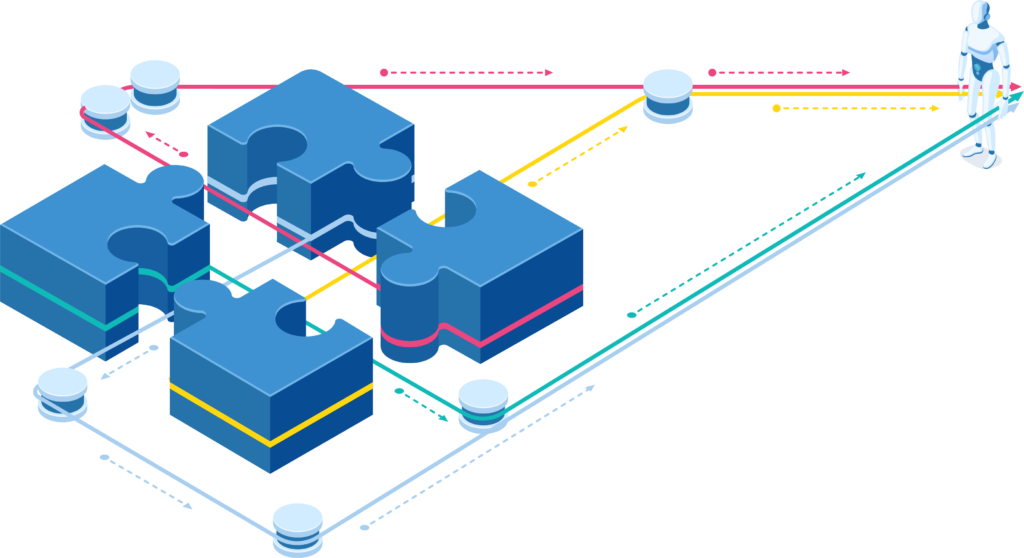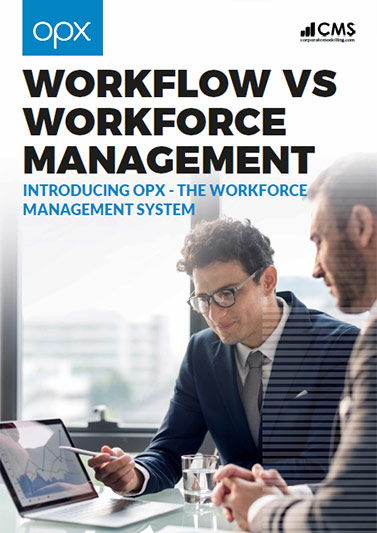Business Improvement and Operational Excellence
Business Improvement is a continuous process; improving one area can often result in a detriment in another area. As a result, there are always more things to chase and more work to be done to keep the improvement balanced and constantly progressing.

To improve overall business performance, the management needs to focus on four key areas:
- Improving Quality
- Improving Productivity
- Improving Utilisation
- Improving Efficiency
This can be achieved by ensuring your organisation has:
- the right culture
- the right metrics
- the right people
- the right training
- the right systems
- the right management approaches
What does this mean regarding business improvement?
Agile Operations
It’s crucial that the operational teams want to implement an agile approach. This involves changing the way they look at the work, the operating procedures, and how they view their role(s) in the organisation. This is often hard to achieve and can take up several months or more to implement, requiring a degree of disruption to transform processes. However, experience has shown us this cultural change can be achieved and while initially considered hard or different from the status quo it is well worth the effort. An agile operations team is flexible and reactive to any situation, providing an immediate and necessary foundation for further meaningful business improvement.
Operational Culture
To ensure we have the right culture for continuous business improvement we need to first look at how we organise and manage the teams. In line with general agile processes, we need to ensure that the team:
- knows what we are trying to achieve each day
- feels they can raise operational issues
- feels they can raise operational improvement ideas
- feels they are part of a team
- strives to improve individual and overall team performance and quality
To achieve this, internal communication should be a priority. Teams should meet once or twice a day, so all individuals are aware of current progress, demand, resource availability, and management’s expectations for each day.

The aim is to identify the actual issues that can be resolved, involve the team in achieving the business targets, and making the team aware of their performance metrics in comparison to the expectations.
The responsibility of this communication process lies with the team leaders, but every team member should get a chance to speak, raising any issues and providing a status report on what they have been working on and what they will do next.
OPX provides the information required by the team leaders who facilitate the stand-up meetings, where past performance and future performance expectations are reviewed. OPX information is always up to date, representing the true picture of the work completed and the work required to be completed. It manages referrals to team leaders for issues or problem cases, so they always have the information they need before going into the stand-ups.
Operational Metrics
To improve the business and properly manage an operational team, we need metrics. There are many metrics available in systems like OPX, but the key ones are:
- Demand: What work we must complete
- Capacity: What resources we must complete the work with
- Skills Required for Demand: What skills are required to complete the work
- Skills available for Capacity: What skills we have in the team
- SLA: The service level agreements expected by the customers or management team
- Quality: The quality expected and being achieved
- Rework
- Failure demand
- Quality scoring both across the team and individual
- Average handling and expected handling times: for carrying out any activity
- Utilisation: Actual Operating hours/available hours and productive hours
- Productivity: the rate of output per unit of input, such as cases per administrator
- Efficiency: The ratio of outputs to inputs e.g. work completed and total processing time
- Effectiveness: meeting the desired targets, doing the right work.
To control the process of achievement of operational goals, the business needs appoint its metrics. Only this way the management can plan ahead and react dynamically to the changing demand in real-time.
OPX provides all the operational metrics required for business improvement in real time. The data enables prior trend analytics and business forecasting. OPX goes one step further by ensuring that you can take all the non-transactional effort involved in operations into account. OPX tracks when your employees log in, when they log out, all transactional work they perform, their breaks, their meetings, and all non-transactional work of any kind (including work allocated off-system by the team leaders).
This detailed tracking allows for very accurate data on individuals and aggregates at team or divisional level which can be used to tailor the plans for operational improvement.
All OPX metrics can be gathered in reports and dashboards. All reports and dashboards can be tailored, and all metrics can be tailored too. For example, you could configure a metric to track meetings being value added or not value-added time for an employee.
All OPX statistics are multi-dimensional. They can be viewed by many factors including customers, processes, activities, product classes, or even individual products allowing for variations in statistics, such as average handling times to be by product, for example.
Operational Team: The right people
Once we have trained the team leaders and team members in agile operations we need to see if we have the right organisational structure for further business improvement. As you start to use OPX for the first few weeks the metrics are gathered but are likely not accurate until the system is adopted by the majority of user. After several weeks, it is expected that the data presented by OPX will become more accurate. Give your employees time for transition – getting familiar with new technologies and processes can take more time for some people.
OPX understands the demand and provides multiple mechanisms for ingesting data. It can gather data from any incoming scans and index documents or emails, web API, phone requests, or work typed in manually. In doing so it can see:
- Which teams the work needs to go to
- Which skills are needed to complete the work
- Which team members have the skills to complete the work
- What is the expected or actual average handling times for each activity and each specific case
OPX can tell the team leaders if they have the available capacity to complete the work in line with the SLAs. Whether there is a shortage of people, a shortage of individual skills or maybe surplus of people. As your team leaders become more familiar with handling the data provided by OPX, the system leads to further business improvement.
OPX allow surplus resources (employees) to have work allocated from another team if they have the skills to complete the work. This means that team leaders can loan these resources (people) to other teams either fully (such that all the work the person does is from the other team), in parallel with their own work, or part-time after completing their own team’s work. This allocation to an assigned team can be for as little or as long as the team leader thinks is required.
OPX tracks the skills of individuals as well as demand and can show skills shortages or surpluses. These can be used to ensure that employee skills are not reduced by having no work of certain type for too long. Team leaders can keep the team members skills current by allocating work periodically to the individual if the automatic allocation has them on more productive work.
Operational Training
For operational improvement, every team needs to move with the times and keep constantly up to date with their skills and competencies. It is important team leaders have both accurate demand and capacity plans as well as accurate team data allowing them to plan the training more effectively.
OPX produces individual level reports showing any issues with:
- Performance: such as an individual’s average time to complete work being higher than the expected time to complete or well above the average of the team
- Quality: such as the rework or failure demand caused by the individual being too high and above expectation allowing a lean or six sigma approaches to be followed
- Utilisation: such as showing the idle time or excessive break or meeting times of individuals or whole teams. Resulting in question: is low utilization a result of low demand, incorrect skills or over capacity in certain area?
- Effectiveness: If there was a plan for the team member for the day or month; has it been met? how do the teams KPIs compare with the basis of the target operating model?
Any or a combination of the daily or historic reports can be used to identify where restorative action is required. This most likely signifies a need for training of an individual or a team. In OPX, all data is held for as long as specified; trends in improvement or degradation can be easily identified. Comparisons against similar team members, anonymised or not, and comparisons against the average can all be seen.
Looking at the projected demand and the staff scheduling, data can show when periods of lower demand can be used for training with minimal impact of the customer service level agreements.

Operations Systems Improvement
As OPX is tracking everything, it is easy to see where money and effort go at any given time. This can be previewed in real-time as well as historically. This data can be used for underlying system enhancements, system replacements, or system change requests.
Using OPX dashboards technology allows you to easily build your own dashboards that incorporate in the costs and show:
- Total cost per activity in human time
- Total number of cases and costs of failure demand
- Total count and costs of core system failures (mats codes)
Thus, building a business case based on costs is relatively easy.
For example, if we have an activity that takes 60 minutes, but we only have them happening five times a week, a new system could shorten the processing of them by 5 minutes (reducing the work time to 55 minutes). This spares the business 25 minutes a week (5 x 5 minutes). Such amount may not be the main driver for a change. Nonetheless, if we have a high volume of cases, typical for contact centres – e.g. 1000 cases a week and can save 2 minutes each, then the business end up with 2000 minutes (33.3 hours) saved weekly.
With OpX dashboard and reports it’s easy to calculate the benefits of minor changes in your internal process performance .
But it is not always about the cost, some systems improvements may be about the time. In the last example we had 60 minutes activity, this could be used in many of the business processes and bring down the service levels or customer expectations across the board. OPX can help justify why an operational change or a whole new system could be beneficial in terms of market and customer expectations.
The same approach can be used for RPA, Robotic Process Automation. OPX has a RPA offering or can work with your existing RPA vendor. Mixing and matching the work between robots and human based on simple and complex business rules. OPX can also help with identifying the best cases for RPA – high volume and repetitive work activities, where the investment in RPA scripts and interfaces will lead to the business improvement.
Operational Management Empowerment
OpX is providing all the data, analytics, reports and dashboards required for team leaders and operation management to
- See what is happening in real-time across multiple countries, sites, department, or teams
- See what has been happening today, this week, this month, this year, or historically
- Create predictions for the future demand and human capacity your business has to meet
- Identify processing issues and bottlenecks
- Identify quality black spots
- Identify skills shortages
- See cyclic trends in demand or working time variations
- Manage resources as efficiently as possible and to spread work across the company easily
- Track service level agreements
- Provide data to your regulatory reporting like Conduct Risk , TCF
- Justify underlying systems changes by quantifying the benefits case
- Provide accurate data for your target operating model
- Provide actual cost of service reports
- Identify areas for robotic process automation
We believe that with the right training and the right information, or as we call it – Operational Insight, the business can get more out of their managers and team leaders. This reflects directly in the business performance leading to operational improvement. Implementing relevant solution helps to drive forward the business, providing more accurate reporting and budgeting, better quality improvements, and more operational efficiency.
OpX agile operational approach allows you to train the team leaders, drive forward a cultural change, and maintain the correct attitude to the work and its delivery. Simultaneously, it allows better team cohesiveness by providing training as required, coaching where needed, and the real facts and figures to back up your business decisions.
Do you want to know more? Arrange a free business consultation with our experts.


 Thank you for your interest in our whitepaper. You can download Meet Our Email Bot by clicking the button below.
Thank you for your interest in our whitepaper. You can download Meet Our Email Bot by clicking the button below. Thank you for your interest in our whitepaper. You can download Why Now is the Time to Invest in Back Office Workforce Optimisation by clicking the button below.
Thank you for your interest in our whitepaper. You can download Why Now is the Time to Invest in Back Office Workforce Optimisation by clicking the button below. Thank you for your interest in our whitepaper. You can download AI Driven Forecasting for WFM & WFO by clicking the button below.
Thank you for your interest in our whitepaper. You can download AI Driven Forecasting for WFM & WFO by clicking the button below. Thank you for your interest in our whitepaper. You can download Workforce Optimisation vs Workforce Management by clicking the button below.
Thank you for your interest in our whitepaper. You can download Workforce Optimisation vs Workforce Management by clicking the button below. Thank you for your interest in our case study. You can download the HCL IBS Case Study by clicking the button below.
Thank you for your interest in our case study. You can download the HCL IBS Case Study by clicking the button below. Thank you for your interest in our case study. You can download the ReAssure Case Study by clicking the button below.
Thank you for your interest in our case study. You can download the ReAssure Case Study by clicking the button below. Thank you for your interest in our case study. You can download the Student Loans Case Study by clicking the button below.
Thank you for your interest in our case study. You can download the Student Loans Case Study by clicking the button below. Thank you for your interest in our case study. You can download the Principality Building Society Case Study by clicking the button below.
Thank you for your interest in our case study. You can download the Principality Building Society Case Study by clicking the button below. Thank you for your interest in our whitepaper. You can download WorkFlow vs WorkForce Management by clicking the button below.
Thank you for your interest in our whitepaper. You can download WorkFlow vs WorkForce Management by clicking the button below. Thank you for your interest in our whitepaper. You can download Homeworking in Financial Services Operations by clicking the button below.
Thank you for your interest in our whitepaper. You can download Homeworking in Financial Services Operations by clicking the button below. Thank you for your interest in our whitepaper. You can download Workforce Optimisation for the Back Office by clicking the button below.
Thank you for your interest in our whitepaper. You can download Workforce Optimisation for the Back Office by clicking the button below. Thank you for your interest in our whitepaper. You can download Operational Workforce Management: Build or Buy? by clicking the button below.
Thank you for your interest in our whitepaper. You can download Operational Workforce Management: Build or Buy? by clicking the button below. Thank you for your interest in our whitepaper. You can download Homeworking & Back Office Workforce Optimisation by clicking the button below.
Thank you for your interest in our whitepaper. You can download Homeworking & Back Office Workforce Optimisation by clicking the button below. Thank you for your interest in our whitepaper. You can download Why Optimise in the Back Office? by clicking the button below.
Thank you for your interest in our whitepaper. You can download Why Optimise in the Back Office? by clicking the button below.